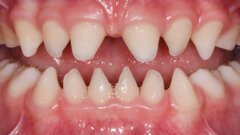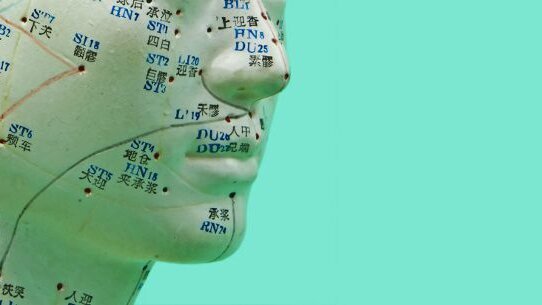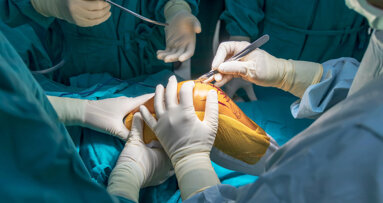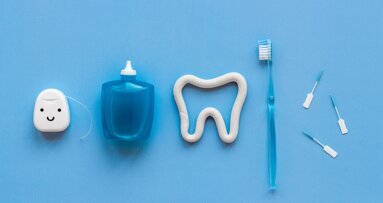During the treatment of symptoms originating from disorders of the temporomandibular joint (TMJ) and occlusion, it was found that restoring the TMJ to its normal condition resulted in a change of general body health. In most cases, this change was for the better. Owing to similar reports, a connection between TMJ status and general body health was therefore hypothesised. However, the mechanism of this relationship remains unclear.
In this article, the relationships between dental occlusion/TMJ status and general body health are reviewed with reference to peer-reviewed papers. A conceptual theory is proposed that may explain this mechanism.
TMJ and myofascial pain
Dental occlusion is the relationship between the maxillary and mandibular teeth when they approach each other.1 The TMJ is the joint of the jaw, which is unique in that it is the only bilateral joint that crosses the midline.2 As the treatment of dental diseases aims to achieve harmony within the entire stomatognathic system, teeth could be literally considered to be a set of gears anchored in bone, while the upper and lower jaws are attached to each other by the TMJ.3
The causes of TMJ disorders can be divided into five categories: dental, trauma, lifestyle habits, stressful social situations and emotional factors.4 Trauma can be in the form of whiplash, traction appliances and blows to the head, face or jaw.4 Evidence of significant trauma to the TMJ has also been found following hyperextension of the cervical spine.5 With regard to habits, bad posture, bad ergonomics at work, oral and childhood habits, as well as poor diet and strenuous activities such as heavy lifting, have been cited.4
Myofascial pain, deriving from the hyperalgesic trigger points located in skeletal muscle and fascia, is commonly characterised by persistent regional pain.6 The myofascial component has generally been considered to be part of pain syndromes that involve TMJ. Trigger points in masticatory muscles are presumably caused by malocclusion, misalignment and habitual para-function of the jaws, abnormal head and neck postures, or trauma.6
Page 1 TMJ and myofascial pain
Page 2 Relationship between TMJ and general body health
Page 3 Mechanism based on qi and the meridian aspect
Page 4 Correlation between trigger points and acupuncture points
OSLO, Norway: Temporomandibular disorder (TMD) pain afflicts younger people more disproportionally than adults, and up to 28% of children globally have ...
The aim of this study was to identify and classify temporomandibular joint dysfunction (TMJD) in psychiatric patients using typical anti- psychotics ...
SYDNEY, Australia: The underlying causes of central sensitisation disorders such as migraine and fibromyalgia are poorly understood. The gut–brain axis ...
LEIPZIG, Germany: As the global population ages, the number of total joint arthroplasties (TJAs), particularly of the hip and knee, correspondingly ...
KRIENS, Switzerland: Dental professionals play an important role not only in oral health but in well-being in general. This gives dental care extra ...
AMSTERDAM, Netherlands: Ahead of the company’s participation at EuroPerio9, Philips Oral Healthcare recently hosted its 11th Global KOL Symposium in ...
Recent research shows that oral health is an essential prerequisite for people’s well-being and quality of life. In order to reach the global goals for ...
DENVER, US: Colorado and Minnesota have become the eighth and ninth states to join the Dentist and Dental Hygienist (DDH) Compact. This occupational licence...
For the last three decades, the combined global prevalence of dental caries, periodontal disease and tooth loss has remained unchanged and higher than the ...
LONDON, UK: The 96th General Session and Exhibition of the International Association for Dental Research (IADR) has begun and is being held in conjunction ...
Live webinar
Wed. 14 January 2026
12:00 pm EST (New York)
Dr. Théo Laplane, Dr. Robert Gottlander DDS
Live webinar
Fri. 16 January 2026
12:00 pm EST (New York)
Live webinar
Mon. 19 January 2026
1:00 pm EST (New York)
Philipp Kopp, Michael Seeber
Live webinar
Thu. 22 January 2026
9:00 am EST (New York)
Prof. Judith Jones D.D.S; M.P.H., Prof. Kakuhiro Fukai D.D.S., Ph.D, Dr. Bathsheba (Bethy) Turton
Live webinar
Thu. 22 January 2026
2:00 pm EST (New York)
Dr. Nicola M. Grande DDS, PhD
Live webinar
Wed. 28 January 2026
8:00 am EST (New York)
Live webinar
Wed. 28 January 2026
11:00 am EST (New York)
Prof. Dr. Jan-Frederik Güth



 Austria / Österreich
Austria / Österreich
 Bosnia and Herzegovina / Босна и Херцеговина
Bosnia and Herzegovina / Босна и Херцеговина
 Bulgaria / България
Bulgaria / България
 Croatia / Hrvatska
Croatia / Hrvatska
 Czech Republic & Slovakia / Česká republika & Slovensko
Czech Republic & Slovakia / Česká republika & Slovensko
 France / France
France / France
 Germany / Deutschland
Germany / Deutschland
 Greece / ΕΛΛΑΔΑ
Greece / ΕΛΛΑΔΑ
 Hungary / Hungary
Hungary / Hungary
 Italy / Italia
Italy / Italia
 Netherlands / Nederland
Netherlands / Nederland
 Nordic / Nordic
Nordic / Nordic
 Poland / Polska
Poland / Polska
 Portugal / Portugal
Portugal / Portugal
 Romania & Moldova / România & Moldova
Romania & Moldova / România & Moldova
 Slovenia / Slovenija
Slovenia / Slovenija
 Serbia & Montenegro / Србија и Црна Гора
Serbia & Montenegro / Србија и Црна Гора
 Spain / España
Spain / España
 Switzerland / Schweiz
Switzerland / Schweiz
 Turkey / Türkiye
Turkey / Türkiye
 UK & Ireland / UK & Ireland
UK & Ireland / UK & Ireland
 Brazil / Brasil
Brazil / Brasil
 Canada / Canada
Canada / Canada
 Latin America / Latinoamérica
Latin America / Latinoamérica
 USA / USA
USA / USA
 China / 中国
China / 中国
 India / भारत गणराज्य
India / भारत गणराज्य
 Pakistan / Pākistān
Pakistan / Pākistān
 Vietnam / Việt Nam
Vietnam / Việt Nam
 ASEAN / ASEAN
ASEAN / ASEAN
 Israel / מְדִינַת יִשְׂרָאֵל
Israel / מְדִינַת יִשְׂרָאֵל
 Algeria, Morocco & Tunisia / الجزائر والمغرب وتونس
Algeria, Morocco & Tunisia / الجزائر والمغرب وتونس
 Middle East / Middle East
Middle East / Middle East
















































To post a reply please login or register